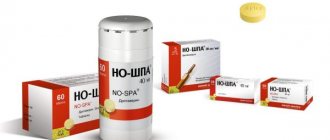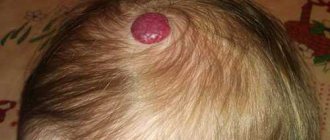Parents are always worried when their child's nose bleeds. The reasons are often difficult to determine. It is important to understand why this happens as quickly as possible. Mothers who always closely monitor the condition of their baby often panic. Especially if the blood flows regularly. In most cases, this phenomenon occurs as a result of injury, but sometimes it may indicate the development of pathology. You need to understand that to make an accurate diagnosis, one symptom, even such a bright one, is clearly not enough. Therefore, the big picture needs to be taken into account. From this article we will learn about the causes of this phenomenon, which doctor makes sense to contact, what methods and methods of treatment to undertake.
Features of the condition
It may be a symptom of a serious illness if the child's nose bleeds frequently. The reasons for this are varied. This phenomenon in the scientific world is called epistaxis. From Greek, this concept is literally translated as “dripping heavily.” Moreover, it is under this definition that the symptom is included in the International Classification of Diseases.
The phenomenon is directly related to damage to blood vessels located directly on the nasal mucosa. In most cases, bleeding is a consequence of damage to the capillaries. Only occasionally do they signal an artery rupture.
What is Nose Bleeding?
Nosebleeds, also called epistaxis, occur when blood vessels in the lining of the nose rupture. There are two types of nosebleeds:
- Anterior nosebleed: In this common type of nosebleed, the blood capillaries at the anterior end, on the front side of the nasal lining, rupture and blood flows out through the nostrils.
- Posterior nosebleed: Bleeding occurs deep in the nose, in the tissues that lie at the back end of the nose. In this case, most of the blood flows into the throat, from where it can also reach the mouth.
Anterior nosebleeds are what you notice most often among babies.
Causes

There are many factors that influence regular bleeding. According to statistics, it is young children who most often encounter such discharge. If your child has frequent nosebleeds, the reasons for this may indicate a serious illness or a temporary situation. In some cases, only a doctor can establish the etiology of epistaxis. When diagnosing this condition, you need to take into account the intensity of its manifestations and frequency.
Here are the main reasons why children have nosebleeds:
- Mechanical injury (blow or bruise). This is the most common option. As a result of the blow, the capillaries of the mucous membrane of the anterior-inferior part of the nasal septum are often damaged. Only in rare cases can epistaxis signal the rupture of larger vessels.
- ARVI. Frequent nosebleeds in a child can be a consequence of frontal sinusitis, sinusitis, or rhinitis. In some cases, all these diseases are accompanied by bleeding.
- Entry of a foreign body into the body. This is another common cause of epistaxis in childhood. In such a situation, you should immediately seek medical help.
- Low air humidity. This symptom begins to appear with the onset of the heating season.
- Picking. A bad habit typical of children can lead to undesirable consequences. It usually affects children with hyperactivity and attention deficit disorder. Often, you can get rid of such a symptom only after visiting a psychologist.
- Allergic reaction. Due to allergies, the mucous membrane becomes too dry. This may lead to frequent nosebleeds in the child. The cause can only be eliminated by identifying the allergen.
What Causes Nose Bleeding in a Baby?
There are many reasons, from benign diseases to serious health problems.
- Nose Trauma: A direct blow or injury can cause blood vessels in the nose to rupture, resulting in a nosebleed. Babies tend to be quite active and can run around a lot. There is a risk of bumping into something or being hit by an object, which will lead to a nosebleed.
- Nose picking: This is often a common cause of frequent nosebleeds in babies. Nails can scratch the delicate wall of the nose, causing bleeding.
- Blowing his nose too hard: If your baby tries to blow his nose too hard, it can cause a blood vessel in the nose to rupture, resulting in streaks of bloody nasal discharge.
- Violent cough: Some conditions, such as cystic fibrosis, may cause your child to cough with excessive force. This increases pressure in the blood vessels inside the nose, causing them to rupture and result in bleeding.
- Dry air: It can dry out the inside of the nose so much that the walls of the blood vessels rupture and blood leaks out. Dry ambient air is especially common in winter, and heaters dry out the air even more. Excessive heat also dries out the air, so babies may experience nosebleeds even in summer.
- Smoke or toxic fumes: Toxic elements in the air or smoke from automobile wastewater and burning tobacco can irritate your baby's nose, causing bleeding.
- Infections: Some upper respiratory infections can cause your baby to bleed from the nose. The most common ones are colds and sinus infections. Both of these conditions cause inflammation of the nasal lining to the point that the blood vessels swell, rupture, and bleed. Such infections may cause other symptoms, such as a headache before a nosebleed.
- Allergies: Substances such as pollen, dust and fur particles can cause sudden nosebleeds in babies. A common allergy that causes inflammation and nosebleeds in babies is allergic rhinitis. Allergies can cause chronic nosebleeds because allergens such as pollen and dust particles are too small to see and can be taken in unknowingly.
- Nasal tumors: These are rare but can occur and lead to nosebleeds. The most common tumor is juvenile angiofibroma of the nasopharynx. Tumors are mostly localized, benign, and very rare; In addition, along with bleeding, they exhibit other symptoms.
- Foreign body inside the nose: Babies tend to stick small objects into their nostrils. The foreign body can damage or infect the delicate inner lining of the nose, both of which can cause nosebleeds in babies.
- Blood disorders: Some blood disorders increase the risk of nosebleeds in young children. One example is hemophilia, in which the blood does not clot quickly. Another disease is leukemia, a cancer of white blood cells (a type of white blood cell) in which the level of platelets in the blood drops, causing poor blood clotting.
- Aplastic anemia: In this type, the bone marrow fails to produce adequate red blood cells, white blood cells, and platelets. Aplastic anemia may increase the risk of nosebleeds due to insufficient availability of platelets, which help blood clot.
- Head Trauma: Most head injuries in early childhood rarely result in internal bleeding. However, a nasty fall from a height or even from stairs can lead to brain bleeding. Since there is no place inside the skull for the blood to escape, it ends up draining out of the nostril.
- Facial trauma: Damage to the bones and blood vessels around the nose can also cause nosebleeds. An example is injury to the bones and tissues around the eyes, which often results in a black eye, which is medically called a periorbital hematoma/hemorrhage. Blood from ruptured blood vessels drips into the nose, causing bleeding.
- Side effects of medications: Sometimes nosebleeds can occur as a side effect of medications such as ibuprofen. However, in such cases, the baby will bleed along with other side effects such as vomiting and diarrhea.
Nosebleeds are a symptom in themselves, but sometimes the condition can go undetected, so it's important to know the signs.
Regular bleeding
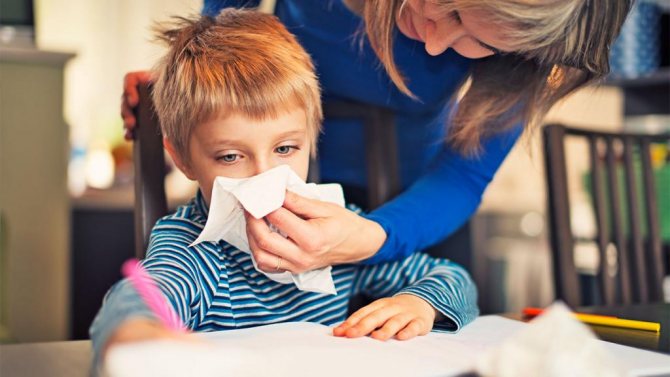
Typically, if nosebleeds are rare, there is no cause for concern. Especially if all this is accompanied by minor blood loss. You should seriously worry about regular bleeding. Daily epistaxis, on the contrary, should cause increased concern among parents about the baby’s condition. When a child has a periodic nosebleed, it can appear at the most unexpected moment. It is important to exclude some pathologies. These are arterial hypertension, heart failure, diseases that lead to dysfunction or structure of blood cells.
The reason why a child's nose often bleeds is lymphoma. This disease affects the lymph nodes and internal organs. Leukemia also provokes epistaxis. This is a whole group of malignant pathologies associated with the hematopoietic system of the human body.
If a child's nose bleeds constantly, this is evidence of decompensatory myocardial dysfunction or high blood pressure. True, parents need to be reassured by noting that all these diseases are extremely rare and occur infrequently.
Nocturnal bleeding
You should be wary if bleeding appears exclusively at night. In such a situation, first of all, you need to make sure whether the baby has a habit of picking his nose.
In addition, bleeding at this time of day is often caused by insufficient air humidity and high temperature in the room. It is recommended to ventilate your baby’s bedroom before going to bed; if you cannot change the situation radically, you will need to purchase an air humidifier.
When there are problems with the microclimate at home, the source should be sought in changes in blood pressure. Because of this, it happens that a child’s nose bleeds in the morning. This may be a reason to seek medical help.
Heat

Many parents are faced with situations where children experience nosebleeds at high temperatures. Not everyone knows why this happens. It turns out that an increase in body temperature in itself is already a good reason for a baby to have a nose bleed. The higher the temperature, the more the peripheral vessels dilate, resulting in the development of epistaxis.
Blood from the nose, accompanied by fever, may indicate the presence of a foreign body in the body, heat or sunstroke, or an acute respiratory viral infection.
Foreign body entry is a common cause of epistaxis. These can be small parts of toys, beads, buttons - all this is a serious threat to children. Fever and spotting are a symptom of scarlet fever, hematological pathologies, and measles. These diseases may be accompanied by nosebleeds. Your pediatrician will tell you what to check your child for and refer you to a specialist, as this is a very dangerous symptom.
How are the Causes of Nose Bleeding Diagnosed?
Because nosebleeds can have several causes, your doctor will use the following steps to diagnose the underlying cause of your nosebleed:
- Baby's medical history : You will need to answer questions about any past infections or conditions your baby has suffered from, as well as the area where you live and the surrounding area, as dry climates cause nosebleeds.
- Physical examination: An endoscope is inserted into the baby's nose to examine the nasal lining for any defects or the presence of a foreign body.
- CT scan: Consists of several x-rays and provides an extensive image of the nose and surrounding tissues. The scan helps diagnose nasal defects and the extent of injury.
- Blood test: The test detects pathogens that can cause illnesses such as colds and flu. Allergies and the presence of blood disorders can also be determined using a blood test. After determining the cause, the doctor offers treatment options.
Runny nose
A runny nose can accompany a large number of diseases of various etiologies. For example, its occurrence is caused by the development of an inflammatory process that is localized on the mucous membrane.
In this case, a baby’s nose may bleed quite often. Common diseases that are accompanied by this symptom are vasomotor or allergic rhinitis, bronchial asthma, ARVI, influenza, scarlet fever and some others.
If they are one of the causes of bleeding, then to get rid of the unpleasant symptom you will need to cure the disease itself.
Blood runs constantly

Having learned the exact cause of nosebleeds in children, treatment should be started in a timely manner. This symptom can often indicate a serious illness. You should be especially wary of systematic epistaxis, when blood flows almost constantly.
Often, the constant appearance of bloody discharge indicates a lack of vitamins, in particular K and C.
The cause of constant bleeding may be nasopharyngeal cancer. It develops in the upper part of the pharynx; this disease is considered characteristic of representatives of the Mongoloid race.
This symptom is also caused by systemic connective tissue pathologies. These include systemic lupus erythematosus, polymyositis, Sjögren's syndrome. Finally, if you bleed almost every day, you may have Osler syndrome or persistent capillary dilatation. This indicates anatomical deformations.
How to stop nosebleeds in children at home
It is important to understand how first aid is provided for nosebleeds in children. It often has to be done at home. It is usually necessary to perform anterior tamponade followed by calling an ambulance.
Emergency care for nosebleeds
In some cases, help requires minimal effort, in others you will need knowledge. They will help maintain the child’s health: cope on his own or hold out until medical workers arrive.
Sometimes everything goes away on its own, but it is necessary to find out the reasons. Nosebleeds in children that are treated blindly may recur and the child’s condition may worsen.
What to do if you have anterior nosebleeds
Help with anterior bleeding is as follows.
- You need to calm down, unbutton your collar.
- Give the correct position. The head should be higher than the body, for example, reclining. You can sit the child down and tilt him slightly forward.
- Something cool is placed on the bridge of the nose: a handkerchief with ice, a damp rag, etc. Sometimes a cold object is placed on the back of the head, and the feet are kept warm: on a heating pad, etc.
- Use drops with a vasoconstrictor effect such as naphthyzine. Lightly squeeze the wings of the nose.
- Insert a cotton swab or bandage soaked in vasoconstrictor or hydrogen peroxide. Press against the nasal septum as high as possible. Carefully remove the swab with blood and moisten it with peroxide.
- If the blood is from the right nostril, raise your right hand, plug the left nostril, and vice versa. If - from both, up - two hands, nostrils pinched (adult).
Read also: Heavy periods after miscarriage
Bleeding should stop after 20 minutes or less. Otherwise, you need to urgently call an ambulance.
What to do if you have a posterior nosebleed
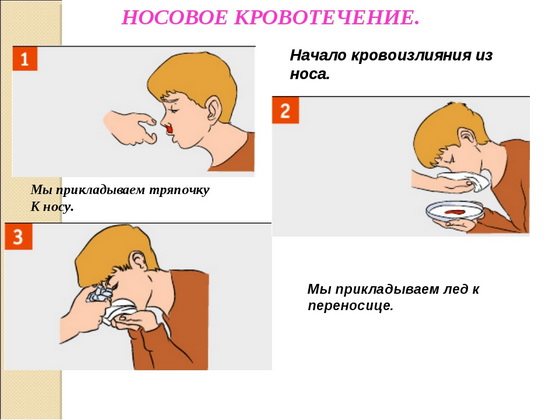
If the large vessels of the posterior sections are affected, it is unlikely that you will be able to stop the bleeding on your own. If you suspect blood flows quickly, it is better not to wait and call doctors immediately. It's also worth considering.
- Blood may flow down the back of the throat. It is not visible, but is detected by doctors during pharyngoscopy.
- Blood sometimes comes from the nose, but its source is damaged lungs, stomach, etc. They are distinguished, for example, by color: from other organs - an unnatural shade, “unclean”, sometimes foaming.
There are cases when an ambulance is also called.
- Serious injury to the nose and head. In the latter case, clear liquid may sometimes flow out with blood.
- The child suffers from hypertension, diabetes, etc.
- Loss of consciousness.
- Vomiting blood and stuff.
What not to do for nosebleeds in children
When providing assistance yourself, it is unacceptable to do the following.
- Remove foreign particles, even they are the cause of the disorder. If unsuccessful, they may cause suffocation.
- Throw your head back, although many are more accustomed to doing so. Blood sometimes enters the stomach and lungs. The result is vomiting or suffocation.
- Often the nose bleeds again after it stops. Reason: the tampon was removed abruptly or was not moistened with a product such as hydrogen peroxide.
- Blow your nose, as the resulting clot or thrombus is displaced.
Serious illnesses
As you can see, illnesses can be very serious, which is why it is so important to promptly determine the cause of nosebleeds in children. Treatment may be required immediately. For example, systemic lupus erythematosus is a severe autoimmune pathology. This disease affects the connective tissue and the vessels that nourish it. A distinctive feature is the appearance of a rash on the patient’s face. In this case, the redness looks like the silhouette of a butterfly. The consequences of this disease are cardiac dysfunction, joint pain, and negative neurological manifestations.
Nasopharyngeal cancer is also called nasopharyngeal carcinoma. It rarely appears in childhood; it is more often found in adult men. Its main danger lies in its ability to rapidly grow throughout the affected organ.
But dilatation of blood vessels, the so-called telangiectasia, develops in children aged six to twelve years. Some people have a congenital form of this disease. Treatment of this pathology is possible using a laser or gluing the walls of blood vessels. This is generally not a dangerous condition, but it can negatively affect the appearance of the skin.
Considering that nosebleeds can be a symptom of various diseases, if systematic problems arise, you should seek help from a pediatrician. He will prescribe the necessary tests and examinations, and then refer you to a specialist.
Causes of nosebleeds in children
Often parents worry about a problem without understanding why it happened. Nosebleeds in children have different causes. They are usually divided into two main types. The first, local reasons include:
- head and nose injuries (fractures, etc.);
- minor damage to the nasal mucosa, for example, after picking;
- improper development of blood vessels;
- deviated septum, which is hereditary;
- tumors, polyps and other pathologies;
- consequences of mucosal injuries caused by operations: probing, etc.;
- inhalation of small particles, insects, and parasites (worms);
- some diseases: sinusitis, vasculitis, etc.
Common reasons include:
- Vascular tone disorders, such as high blood pressure.
- Blood diseases.
- Fragility of blood vessels, which is caused by: infectious diseases with fever (flu, etc.), vasculitis, lack of essential vitamins, minerals in baby food: C, K, Ca and more.
- Taking certain medications that have a thinning effect.
- Dry air in the room: the mucous membrane dries out, blood vessels are easily damaged.
- Sometimes - radiation, harmful fumes, etc.
Sinusitis
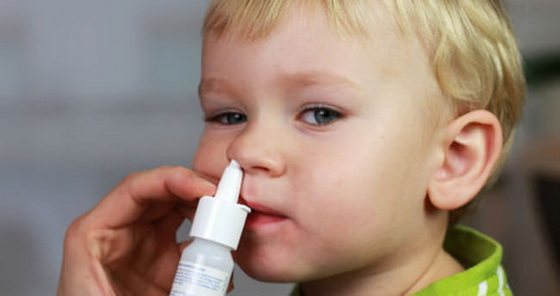
Bleeding is often caused by sinusitis, an inflammation of the nasal mucosa in the paranasal sinuses. It usually appears if ventilation is disrupted and germs find themselves in a closed space. For example, with normal symptoms of a runny nose, sinusitis can become a complication.
Read also: Causes of heavy periods in teenagers
To completely get rid of bleeding, you need to eliminate its cause. Sinusitis occurs in acute and chronic forms and can affect several sinuses. The appearance is influenced by weakened immunity or improper, incomplete treatment of the pathologies that cause it:
- ARVI;
- tonsillitis;
- adenoiditis;
- injuries;
- polyps and other formations;
- advanced dental damage, etc.
Blood diseases
Blood diseases also need to be excluded during diagnosis. Age should be taken into account: the younger it is, the harder it is for the child, and additional symptoms may appear. Common disorders that cause nosebleeds in children include:
- disorders related to blood clotting: hemophilia, hemorrhagic diathesis;
- a significant decrease in white blood cells (agranulocytosis);
- decreased platelet count (Werlhof's disease);
- leukemia
Vasculitis
Vasculitis is a violation of the integrity of the walls of blood vessels. This is a group of diseases that affect various parts and systems of the body: legs, arms, lungs, kidneys, etc.
It is necessary to check the condition of the blood vessels, whether there is a rash. This is important not only to eliminate unpleasant symptoms. Damage to the nasal vessels is sometimes almost the only manifestation of some serious diseases.
Vasculitis Wegener's granulomatosis is an inflammation of the vessels of the nasal cavity and its sinuses. Violation of the integrity of the walls is caused by the development of granulomas. Many people are unaware of the disease until severe consequences appear: the lungs and kidneys are affected. In the early stages it is only nasal congestion and bleeding.
Pathologies of vascular tone regulation
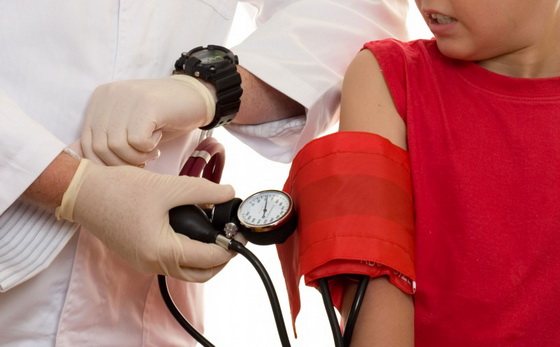
A common cause is increased blood pressure. This occurs when larger vessels in the body cannot properly regulate blood flow, and small ones burst. Violations result from:
- hypertension;
- heart pathologies, for example, defects;
- vegetative-vascular dystonia;
- lung disorders: pneumosclerosis;
- tension as a result of physical effort, stress;
- kidney diseases.
Sudden bleeding

In some cases, epistaxis appears for no apparent reason. As a rule, the cause in this case is a blow or bruise. Sometimes a sudden rupture of a vessel is associated with drying out of the mucous membrane due to ARVI, allergies or air pollution. In this case, it is important to exclude the presence of a foreign body in the nose.
When bleeding begins during landing or takeoff of an airplane, it is worth talking about barotrauma. This is physical damage to membranes and blood vessels that occurs due to sudden pressure from body cavities or the environment. To prevent this condition, it is recommended to suck on candy, drink water in small sips, or constantly swallow.
Teenage problems
During puberty, adolescents experience significant hormonal fluctuations, which can also lead to nosebleeds. As a rule, girls face this problem during menstruation.
The likelihood of symptom manifestation increases due to rapid fatigue, increased educational loads, and disruptions to the normal daily routine.
These are all periodic conditions that should not cause concern. If bleeding continues, you need to seek help from a specialist. It is during puberty that there is a risk of detecting most vascular and heart pathologies.
You should be especially wary of scarlet blood from a child’s nose. This is evidence that the source of bleeding is in the lungs. If the blood is coffee-colored, the source of the bleeding is in the stomach. In such a situation, you should immediately call a doctor.
How to Prevent Nose Bleeding in Baby?
Here are a few things you can do:
- Use saline drops: Your pediatrician will likely recommend saline drops for chronic nosebleeds. Usually, before going to bed, special physiological drops are administered to moisturize the nasal cavity. It helps keep the mucous membrane moist and prevents abnormal rupture of blood vessels.
- Humidifier: Most pediatricians recommend using a cool-mist humidifier in your baby's room. This is especially helpful when nosebleeds are caused by colds and coughs. Humidifiers add water vapor to the surrounding air, making it less harmful to the nasal mucosa. Remember to only use cool mist humidifiers (also called vaporizers) and not hot mist/steam humidifiers, which increase the risk of minor burns and even serious burns.
- Use petroleum jelly: Gently apply petroleum jelly, sold as Vaseline, into your baby's nostrils once a day during the dry season or whenever your baby has chronic nosebleeds. Apply Vaseline a few millimeters into the nostril, but do not insert your finger too deep. This remedy is especially useful for anterior nosebleeds.
- Trimming your baby's nails: Sometimes nosebleeds are simply the result of picking your baby's nose. Trim his nails to reduce the chances.
- Be on the lookout for infections and allergies: If your baby has allergies, make sure you avoid exposing them to potential allergens. For infections such as colds, contact your preschooler's doctor immediately to prevent nosebleeds.
- Prevent injuries: Take preventive measures at home, such as gates on stairs and clearing away loose wires, to prevent falls. When outdoors, monitor your baby and help him choose safe ways to play.
A nosebleed in your baby can be alarming, but remember that in most cases it is not a dangerous condition. Toddlers are predisposed to nosebleeds due to the higher density of blood vessels in the nasal cavity compared to adults. As a child gets older, the density of blood vessels decreases, making nosebleeds less likely. However, treatment for nosebleeds is simple.
How to stop bleeding?
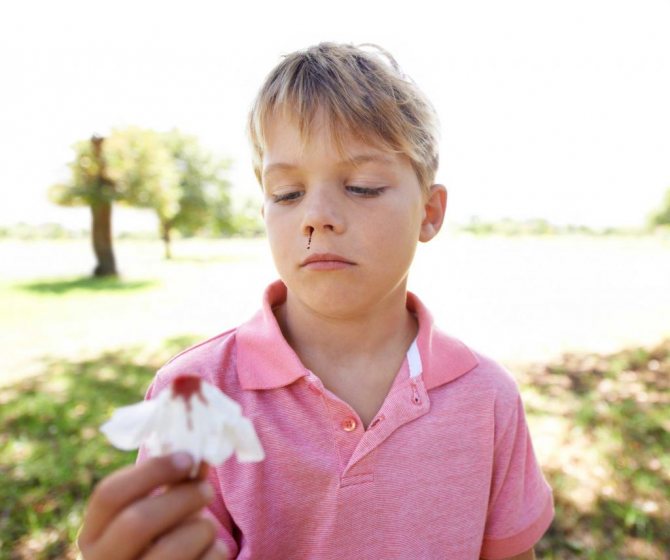
If your nose bleeds, it is important to stop it in a timely manner. At the same time, it is strictly forbidden to throw your head back, and you should also not put the baby down, this can only aggravate his condition.
The optimal solution is to sit the victim down with his head down. At the same time, place cold turundas in your nose, and cool the bridge of your nose with an ice compress.
If even after this the bleeding cannot be stopped, a vasoconstrictor may help. They are placed in the nose. In case of long-term and intense discharge, which is accompanied by large loss of blood, you should immediately call an ambulance.






